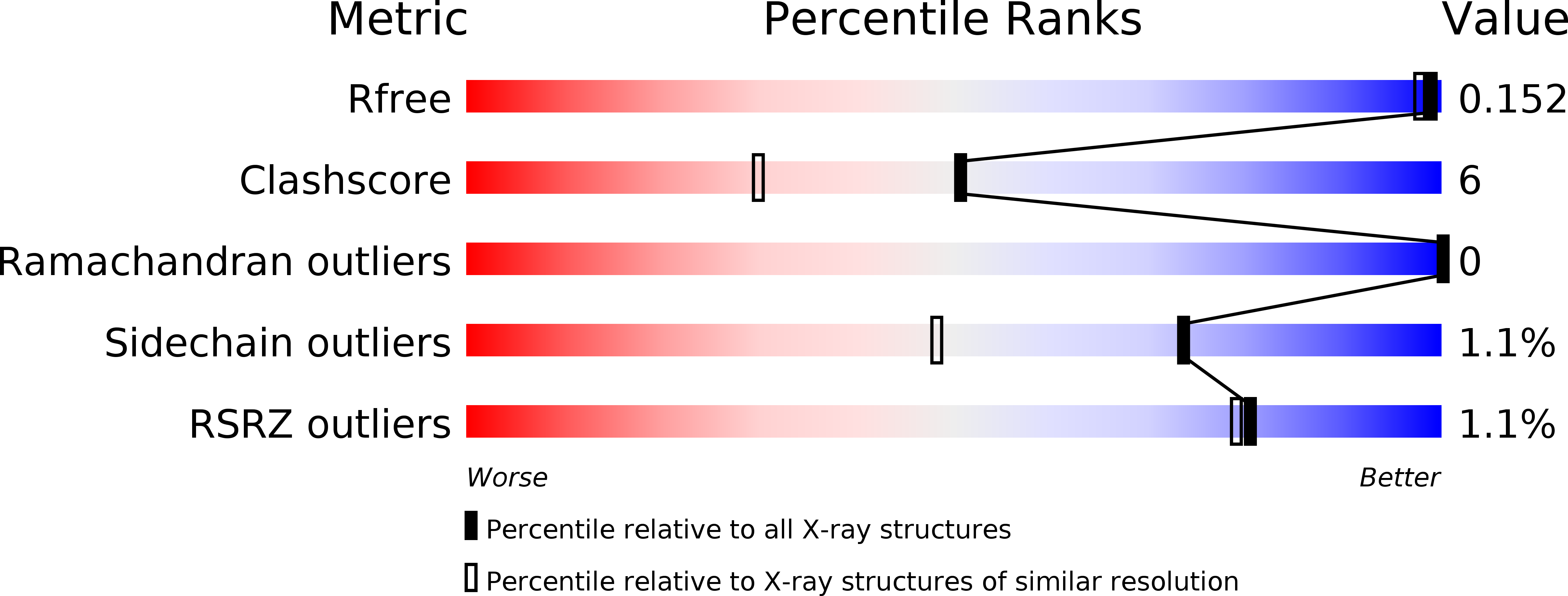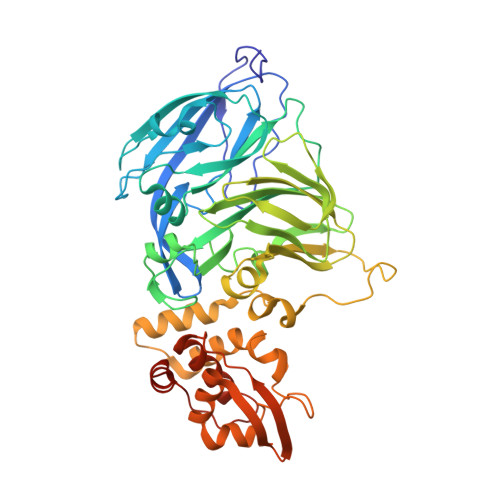Structures of protein-protein complexes involved in electron transfer.
Antonyuk, S.V., Han, C., Eady, R.R., Hasnain, S.S.(2013) Nature 496: 123-126
- PubMed: 23535590
- DOI: https://doi.org/10.1038/nature11996
- Primary Citation of Related Structures:
2YQB, 3ZBM, 3ZIY, 4AX3 - PubMed Abstract:
Electron transfer reactions are essential for life because they underpin oxidative phosphorylation and photosynthesis, processes leading to the generation of ATP, and are involved in many reactions of intermediary metabolism. Key to these roles is the formation of transient inter-protein electron transfer complexes. The structural basis for the control of specificity between partner proteins is lacking because these weak transient complexes have remained largely intractable for crystallographic studies. Inter-protein electron transfer processes are central to all of the key steps of denitrification, an alternative form of respiration in which bacteria reduce nitrate or nitrite to N2 through the gaseous intermediates nitric oxide (NO) and nitrous oxide (N2O) when oxygen concentrations are limiting. The one-electron reduction of nitrite to NO, a precursor to N2O, is performed by either a haem- or copper-containing nitrite reductase (CuNiR) where they receive an electron from redox partner proteins a cupredoxin or a c-type cytochrome. Here we report the structures of the newly characterized three-domain haem-c-Cu nitrite reductase from Ralstonia pickettii (RpNiR) at 1.01 Å resolution and its M92A and P93A mutants. Very high resolution provides the first view of the atomic detail of the interface between the core trimeric cupredoxin structure of CuNiR and the tethered cytochrome c domain that allows the enzyme to function as an effective self-electron transfer system where the donor and acceptor proteins are fused together by genomic acquisition for functional advantage. Comparison of RpNiR with the binary complex of a CuNiR with a donor protein, AxNiR-cytc551 (ref. 6), and mutagenesis studies provide direct evidence for the importance of a hydrogen-bonded water at the interface in electron transfer. The structure also provides an explanation for the preferential binding of nitrite to the reduced copper ion at the active site in RpNiR, in contrast to other CuNiRs where reductive inactivation occurs, preventing substrate binding.
Organizational Affiliation:
Molecular Biophysics Group, Institute of Integrative Biology, Faculty of Health and Life Sciences, University of Liverpool, Liverpool L69 7ZX, UK.
















